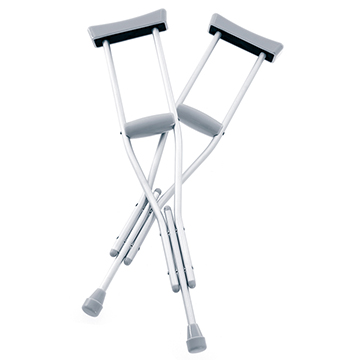
Managing Your Health
Taking a proactive approach to your health can help you live a long and happy life. We offer a number of services and benefits to help you manage your health.
Flu Prevention
If you haven’t gotten your flu shot yet, now’s the time. It’s safe and effective, and will help protect you and everyone around you from getting sick. The Centers for Disease Control and Prevention (CDC) says that it’s safe2, effective, and can be given at the same time as the COVID-19 shot or booster. Get your no-cost flu shot at a convenient location near you.
Visit the Flu Resource Center to learn more about the flu and where to get your flu shot.


Managing a Chronic Conditions
A chronic condition is a condition that affects your health and can be controlled but not cured. Examples of chronic conditions include:
- Allergies
- Alzheimer's
- Asthma
- Breast cancer
- Diabetes
- Heart disease
Often patients have more than one chronic condition. The good news is that many chronic conditions can be prevented, and, if you have one, it can be effectively controlled. Please be sure to see your doctor regularly.
Avoiding Chronic Condition
To avoid a chronic condition or to make one easier to live with, consider these lifestyle changes:
- Eliminate tobacco use: All tobacco products put you at a higher risk for chronic illness. As soon as you stop using tobacco, your body begins to recover from its harmful effects.
- Eat a heart-healthy diet: Focus on including fruits, vegetables, whole grains, non-fat or low-fat dairy products, lean meats, fish and poultry into your diet. Try to increase the amount of fiber and nutrients you eat, and limit your fat, calorie, and salt intake to a moderate amount. Nutritionists generally agree that you should get about 30 percent of your calories from fat, preferably unsaturated fats.
- Follow an appropriate exercise program: Exercise can help you prevent or cope with a health challenge. The right exercise program can give you more energy and increases your strength, flexibility, balance, and coordination—plus it can help ease pain and improve your sleep and outlook. Ask your doctor to help you find an exercise program that's right for you.
- Learn to manage stress: Stress is part of life. It's our body's way of protecting us from a perceived threat. However, if stress goes on for too long, it can accelerate the aging process. Some ways to cope with stress include taking care of yourself, exercising regularly, sharing your feelings and learning how to relax.
- Get enough sleep: Older adults need about the same amount of sleep as younger adults: seven to nine hours per night, on average, says the National Institute of Aging. If you're having trouble getting enough sleep at night, talk to your doctor.
Preventing Falls and Avoiding Injury
For many older Americans, a fall can be a life-changing event, resulting in broken bones, pain, depression, and possibly even recuperation in a nursing home.
Did you know that one in three Americans, age 65 or older, will fall down this year? And that the risk of falling increases with age? If you've fallen in the past, you're at higher risk for falling again. For your own health and safety, if you do take a tumble, it's important to inform your doctor.
Here are a few ways you can help prevent a fall injury:
Talk to Your Doctor About Your Medications
- Ask your doctor or pharmacist to review your current list of prescriptions and over-the-counter medicines to find out if any increase your risk for falls.
- Be aware that alcohol interacts with many medications, potentially increasing the negative side effects.
Get Regular Vision Exams
- Have your eyes examined annually; poor vision can raise your risk for falls.
- Be sure your eyeglasses are clean, in good repair, and the correct prescription strength.
- Wear sunglasses to cut down on glare.
Make Your Home Safe
- Remove throw rugs and secure rugs to the floor with double-sided tape and put non-slip mats in the tub and shower.
- Install handrails on both sides of the stairway and grab bars in the toilet and shower areas.
- Use extra lighting in dark areas; put nightlights in hallways, stairways, bedrooms, and bathrooms.
- Move items you frequently use (glasses and plates) to lower shelves in your cabinets.
- Wear proper-fitting shoes with firm, non-skid soles; avoid loose-fitting slippers and sandals.
Get Active
- Exercise to improve your strength, balance, and overall health.
- Ask your doctor about the best type of exercise for your fitness level. Consider weight-bearing exercise, including weight-lifting and walking, as well as yoga or tai chi.
- Drink water regularly so you don't get dehydrated, which could lead to falling.
Learn More
- To learn more on how to prevent falls, Download our fact sheet
- Visit the Massachusetts Department of Health and Human Services for additional tips and resources on fall prevention


Urinary Incontinence
Urinary Incontinence (UI) is the loss of urine control. Symptoms can vary from slight leakage of urine, to not having any control, or feeling strong urges to urinate. The problem can be short or long-term, and is often caused by other health issues, such as bladder infections. UI is not a normal part of aging, but is more common in older people.
Types of Urinary Incontinence
- Stress Incontinence—The most common form of incontinence. It occurs when movements such as exercise, coughing, sneezing, laughing, and lifting heavy objects put pressure on the bladder.
- Urge Incontinence—When the need to urinate comes on very quickly. Often, not being able to get to a restroom in time. It may be a sign that conditions, like diabetes, stroke, dementia, Parkinson's disease, urinary tract infections, or an overactive bladder need attention.
- Functional Incontinence—When you have urine control, but can't get to a restroom in time. Sometimes due to conditions, such as arthritis, that make it hard to move.
- Overflow Incontinence—Small amounts of urine leak due to an over-filled bladder. It may feel like you can't fully empty your bladder.
- Mixed Incontinence—Having more than one type of urinary incontinence.
Causes of Urinary Incontinence in older adults
- Issues related to certain diseases or medicines
- Menopause
- Aging
- Urinary tract infection
- An enlarged prostate or treatment of a prostate problem
- Stool build-up in the bowels
- Obesity
- Spinal cord injuries, diabetes, Parkinson's disease, and multiple sclerosis
- Overactive bladder
Urinary Incontinence Symptoms
- Pain when filling the bladder or urinating
- Stream of urine gets weaker and weaker
- Urinating more often
- Needing to rush to the restroom or not making it in time
- Abnormal urination or changes related to stroke, spinal cord injury, or multiple sclerosis
- Consistent urine leakage
- Frequent bladder infections
Getting Diagnosed
If you're experiencing any symptoms, talk to your doctor about urinary incontinence. They may refer you to a urologist or urogynecologist that specializes in urinary tract diseases.
Types of Treatments
- Behavioral Therapies to Regain Bladder Control
- Bladder Training—Teaches you to resist the urge to over-empty your bladder by going to the bathroom too often.
- Toilet Scheduling—Using a routine or scheduled toileting, habit training schedules, and prompted voiding to empty the bladder every 2 to 4 hours to prevent leaking.
- Pelvic Muscle Rehab to Prevent Leakage
- Kegel Exercises—Pelvic exercises can strengthen the bladder muscles to improve, and even prevent, urinary incontinence. Women should perform them 30 to 80 times daily for at least 8 weeks.
- Biofeedback—Learning how to relax and control stress can help you control your pelvic muscles and body functions. Best results when practiced with Kegel exercises.
- Vaginal Weight Training—Tighten vaginal muscles using small weights held within the vagina for 15 minutes, twice a day, for 4 to 6 weeks.
- Electrical Stimulation Therapy—Mild electrical pulses stimulate muscle contractions in the pelvis. Combine with Kegel exercises for best results.
- Other Treatments
- Medicine
- Surgery
- Diet changes
- Adult incontinence products (diapers and pads)
Meals and Nutrition
Good nutrition, combined with physical activity, is an important part of leading a healthy lifestyle. Eating right can help you manage or maintain weight loss, reduce your risk of chronic conditions, and boost your overall mood and energy.
Visit the following websites for more information and helpful tips:

- Exceptions may apply. Check your plan materials for details. Medicare Advantage members are covered when administered by an in-network or out-of-network provider. Flu vaccines are covered under Medicare Part B.
- Centers for Disease Control and Prevention (CDC), “Preventing Seasonal Flu,” August 26, 2024.

